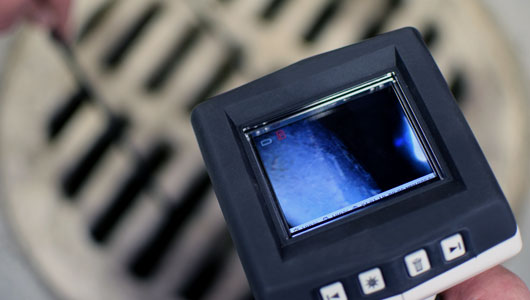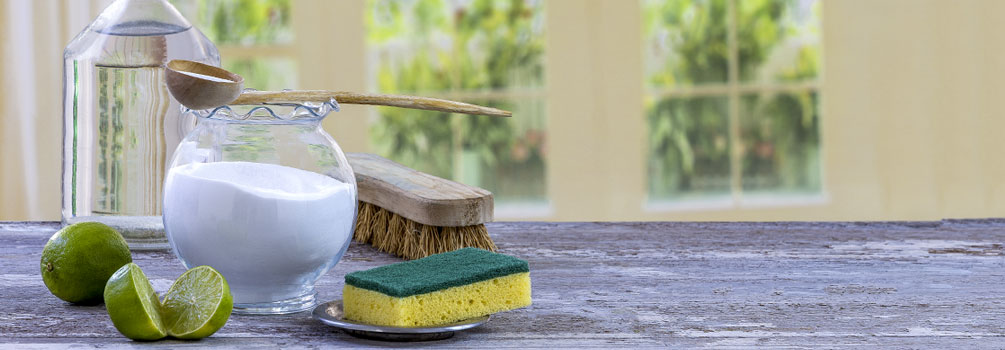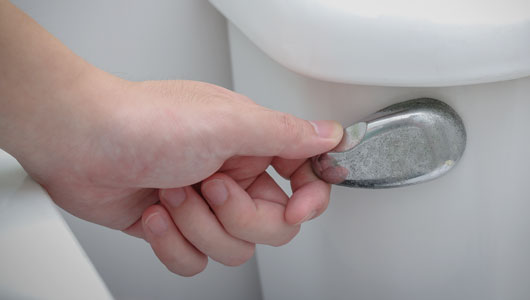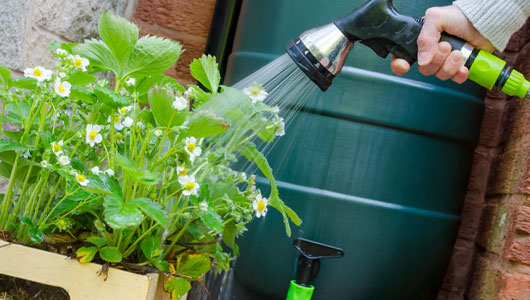A Healthy Environment Begins at Home
From installing a rain barrel to using non-hazardous cleansers in your kitchen, a few simple changes around your house or business can make a big difference in preventing sewer backups and street flooding, as well as keeping our local waterways safe and clean. Here are a variety of tips for protecting the health of your home—and our environment.
Maintaining Your Sewer Line and Septic System
 As a home or business owner, you are responsible for maintenance and repairs to the lateral line—the pipe that connects your property to the MSD sewer line. Fortunately, there are several preventive steps you can take to avoid costly repairs.
As a home or business owner, you are responsible for maintenance and repairs to the lateral line—the pipe that connects your property to the MSD sewer line. Fortunately, there are several preventive steps you can take to avoid costly repairs.
Tree roots can grow into cracks in sewer pipes, causing leaks as well as large blockages. Remove trees growing near your sewer line, or plant trees with shallow root systems, such as ash, maple, willow, or oak trees. When installing or repairing your lateral line, spreading copper sulfate crystals around the top and sides of the pipe creates a poisonous zone that roots cannot penetrate. If you suspect that roots or other debris are partially blocking your sewer line, a plumber can look into the pipe with a special camera. They can also rod, or “snake,” the pipe to clear out the blockage.
Businesses such as restaurants and food processors or larger homes with busy kitchens use grease traps or interceptors to prevent fats, oils, and grease (FOG) from going into the sewer pipes. At home, you can help keep your kitchen drains clean of FOG by occasionally pouring a mixture of baking soda and vinegar down the drain, followed by extremely hot water.
To keep dirt, leaves, and other yard debris out of the sewers, use a grate over your yard drain and clean it regularly. To prevent sewer backups during heavy storms, consider having an experienced plumber install a backwater valve to your home’s drainage system.
Septic systems still exist in the MSD service area. Septic systems are underground wastewater treatment structures where there are no centralized sewer systems. They use a combination of nature and proven technology to treat wastewater from household plumbing. A typical septic system consists of a septic tank and a drain field, or soil absorption field. If not routinely inspected and properly serviced, septic systems can cause groundwater contamination and pose the risk of contaminating nearby surface waters. To learn more about how to service your septic system, visit https://www.epa.gov/septic/septicsmart-homeowners

Cleaning the Natural Way
For most St. Louisans, our homes are full of products containing chemicals that can be hazardous to the environment. Bath and kitchen cleaners, batteries, old medications, motor oil, antifreeze, pesticides, paint—the list goes on and on. When used or disposed of improperly, these chemicals can end up in our waterways, harming plants, animals, and even people. But, you can create a number of safe and natural solutions using inexpensive household items you may already have on hand.
Kitchen Surfaces & Floors
Dilute ¼ cup of vinegar in a gallon of warm water. Use a sponge or spray bottle to apply, and wipe with a sponge or towel.
Oven Cleaner
Mix ¼ cup baking soda, 2 tbsp salt, and hot water to make a paste. Apply to oven surface. Let it sit for 5 minutes. Then wipe clean. Or, mix 2 tbsp liquid soap (castile, peppermint), 2 tsp borax, and 1 quart of warm water. Spray on oven surface. Let it sit for 20 minutes, and wipe clean. For tough stains, scrub with a fine steel wool and baking soda.
Toilet Bowl Cleaner
Pour 1/4 cup baking soda into toilet bowl and drizzle with vinegar. Let sit for 30 minutes. Scrub and flush. Add borax for stains.
Sink, Tub, & Tile
Use a mixture of 1/2 cup baking soda and 2-3 tbsp liquid soap.
Mildew Remover
Dissolve 1/2 cup vinegar and 1/2 cup borax in warm water. Apply with sponge or spray bottle.
Clogged Drains
Use a hair trap to help prevent clogged drains. If a clog does occur, use a plunger or plumber’s snake to loosen the blockage. Then, pour 1/2 cup of borax followed by 2 cups of boiling water. Or, pour 1/4 cup baking soda down the drain, followed by 1/2 cup of vinegar. Cover drain and let it sit for 15 minutes, then follow with 2 quarts of boiling water.

Can I Flush It?
Flushing the wrong items down the toilet or drain can cause slow drainage, blockages, flooding, and hazardous back-ups into your home or yard. Fixing them can require costly and disruptive repairs for you and MSD and contributes to rate increases for the whole community. Don’t let your hard-earned money go down the drain. Learn more about safely handling common household products here.

Around Your Home & Yard
Find out how you can help maintain an environmentally healthier home, yard, and sewer system with these helpful ideas.

